#Rakesh Jhunjhunwala Company
Explore tagged Tumblr posts
Text
Task 18- May Day!!!
After a dream run of nearly a year, Akasa Air, a brand of SNV Private Ltd. appears to have hit a bit of turbulence. The fledgling budget carrier had been rapidly expanding its operations and network over the past year, which saw it becoming the fastest to get to a fleet of 20 aircraft, a prerequisite to mount international flights. While the fleet expansion has been impressive, Akasa Air, which was backed by the late billionaire investor Rakesh Jhunjhunwala, appears to be finding it hard to hold on to enough pilots to optimally operate its aircraft, at least for the time being.
Hit by a spate of resignations from pilots over the past few weeks, the airline recently sued some pilots for quitting abruptly without serving their regulation notice periods of six months. The carrier claimed that their sudden exit had led to numerous flight cancellations, resulting in operational losses and damage to its reputation. According to sources, over 40 pilots quit the airline in recent weeks and legal proceedings have been initiated against some of them. This has severely affected the image of Akasa air in the airline industry.
Task in hand- You’re the CMO of Akasa air and you have to regain the disgraceful image that has been created by the media house and led the company to get into this type of situation.
2 notes
·
View notes
Text
Top 10 of the Finances King Men Who Changed the Face of the Financial System

Properies of the financial world are people gifted with intelligence that revolutionized investing, banking, and business. Here are the top 10 finance kings:
Warren Buffett: The American investor and philanthropist of the diversified investment firm, Berkshire Hathaway.
Elon Musk: Founder of Tesla and SpaceX changing the industries.
Jeff Bezos: Jeff Bezos, the creator of amazon and the innovator behind the modern ecommerce and freight.
Jamie Dimon: Chief executive officer of JPMorgan Chase managing the company when it has storms.
Ray Dalio: Theowner and founder of Bridgewater Associates, an innovator in the strategies for the macro economy.
Rakesh Jhunjhunwala: India’s “Big Bull,” legendary stock investor.
Larry Fink: The head of the world’s largest asset manager, BlackRock, an advocate for sustainable investing .
Peter Lynch: This is the manager of Magellan Fund – the folk hero of investing for the rest of us.
Benjamin Graham: Greatest stock market theorist and writer of The Intelligent Investor.
Michael Bloomberg: Bloomberg L.P has transformed financial data.
Visit finniftyindex for more related information
1 note
·
View note
Text
If you ask questions about stock market to your friends, family, you will see most of them will say investing in stock market is like gambling. They believe there's no logic behind stock price movement. They think stock market is for high iq people & only highly intelligent people can make profit out of it. They are wrong. if you look at history you will see almost all billionaires made their fortune indirectly or directly from stock market. Warren buffet Bill gates Larry page Mark Zuckerberg Elon musk Rakesh Jhunjhunwala Gautam Adani all made their fortune by listing their company on stock market. One of them created wealth from direct stock investing.welcome to this series of shorts where I will explain stock market. You will become pro if you are noob at the end of series. so if you haven't subscribed then subscribe & hit the notification icon.
youtube
1 note
·
View note
Text
Gaming apps converting earnings to crypto, Rs 700 crore moved out of India, reveals GST pro
“Someone asked me what is the best time to invest in India, I told him in my opinion the best time to invest was July 24th, 1991, which is the day Manmohan Singh gave the budget, the index of 1400, the Sensex I believe was around 1400 odd there and that day the cards were open. He knew that India was going to change and go to a better place and subsequent events have proved it completely right. The next best time to invest is today. I mean if you have not invested in India, you gotta start doing it now,” says Ramesh Damani, Member, BSE.
Damani says: “All my predisposition tells me to remain invested, do not get scared by the volatility and I have not been for 30 years, I have always remained almost fully invested in Indian markets, so I do not get scared with the volatility. The best is yet to come.”
What a delight to have you on ET now. Thank you for joining us. It is always a pleasure to be with you and thank you so much for the very kind words. And I will say learn to be bullish in India, I learned from our common friend Rakesh Jhunjhunwala and my mentor RK Damani. They are the ones who taught me that India is a growth country. It is so populated and so there is only upside. I owe a lot of debt to those two people at least.
To be fair, you have always identified mega trends. And before the world started using the word mega trends, you started practicing the whole thesis of looking at the big picture and then identifying companies within that. Yes absolutely right. I tried to do that. When I came back in the late 80s to India, the mega trend was cement shares. It was actually morphed by what was called the liberalization trend that was taking place in India. After that, I realized the big money is made in the big swing and you need to identify the big swing. So we were very lucky we got the 2000 technology trend right. And then I tried to follow each bull market and try to spot the leadership in this bull market.
I have been at somewhat of a thought process trying to figure out how to label this bull market that started. You know how we label this bull market? I finally had what you call eponymy moment which says that the label would have caused the growth of the great Indian middle class. I think that is going to be a great story. The new book out which I would recommend. I have not read it yet but I have ordered it is by Homi Kharas called The Middle Class. A lot of my ideas are from there.
He says that it is the middle class that started in England in the 18th-19th century that is shaping our world today. And he says that out of a population of about 8 billion 4 to 5 billion are now in the middle class. And the maximum number of middle class are coming from India rather than from places like America. So that is going to be a major trend because the middle class is roughly defined as having a PPP purchasing power parity of about $12 per day which is significantly above the poverty level of $2 a day.
That means at that point they can save, they can invest, educate, travel and do a number of things. And what we are seeing perhaps in India is the beginning of a hockey stick curve as our per capita has gone over $2,500 and the middle class expanded quite handsomely. They are now demanding action on things from climate change, to travel, to better education, to better living standards. That will be the mega trend which is not only shaping this bull market but also the society around us.
What is right and wrong in this market? We can argue both ways. What is your assessment? Well you know I think there is much to be right in this market. I think the last few days we have seen a significant fall in the market. I think we have added, if I am not mistaken, about 13 crore demat accounts in India, a majority of which have come in the last three years. All of them have been uniformly optimistic which is good. But they are getting a lesson to understand exhibits in the market, the difference between what I call risk and volatility.
Risk is the choice of permanent loss of capital which is very dangerous and you do not want to be in that situation. Volatility is what happened yesterday and what happened the day before yesterday and what will keep on happening in the markets. That market is correct. The next 2,000 points on the Sensex can be up and down. Nobody knows what is going to happen. Maybe an astrologer can say what will happen. But my strong feeling is that the next 20,000 points on the Sensex are higher because of the unfolding demographics, digitization and democracy that has taken root in India. So I feel that there is a lot that is going on right with this market.
What is going wrong in the market? A bull market like this will always lead to excesses, to overstretched valuations and will lead to unnecessary confidence and sometimes regulatory changes that are important or regulation changes that are important being pushed aside because the market is doing so well. We hope those mistakes do not happen. But there is a lot to be thankful for and a lot to be looking forward to being optimistic over the next few years rather than being pessimistic.
How are you approaching this market, are you fully invested? Yes, I am fully invested. I barely have any cash which is rare for me. Typically, I go in with 5-10% cash into the bull market but as I have aged and matured, I have been more confident putting all the money on the table and letting the risk come where it will. I feel there is good reason for optimism and one of the sectors that I called this time was of course the public sector stocks and they have had a brilliant run out there.
We need to give credit to the Modi government that the public sector, which was one of the drags on the Indian economy, has turned around. The people in DIPAM are really on top of the game. For the first time they are doing an OFS and the prices go sharply higher after the OFS, you know, so the fall is very temporary in those prices. I think the debate that PSUs should be privatized or value will not be unlocked has now receded. We are fine if these companies are so well managed.
One very important thing that people missed in the stock market was that a) the government would use these public sector units as the blunt edge for capital expansion and b) that they were telling them that you have to pay 30% of its dividends.
Two, three years ago, you were getting these companies on today's earnings and at a 7-8% yield which is an extraordinary bonanza the investors got early. So, it has been a good place and I am very clear, including after what the prime minister said in the Parliament and I am sure you noticed that. Basically, the Prime Minister of India going on the floor or well of Parliament and saying a bullish case of public sector in stocks, when did that happen? It has never happened before. So we were ecstatic when the prime minister did that.
It was in mid-August sometime and so my personal feeling is that the leadership is very much intact with the public sector stocks. They probably have a large-ish way to go still because typically, in the bull market leadership, the stocks go up 10x 20x after some point. So I would remain invested in good quality businesses.
The aggregate market cap for PSUs including LIC and some new IPOs is up 3x, that is aggregate market cap. It has been a phenomenal run and plus you got so much dividend out of it. I mean you were getting these stocks basically at 4-5% yield and with a certainty of an order book, it is not that the order books were speculative. We knew the order books for the next five years. So, I think there was a whole debate which I think was wrongly conceived in the stock market last year that you buy quality at any price and, of course, that is a mislead, you cannot buy quality at any price. There is a price that you pay will reduce your investment returns without doubt and I think the people who stuck to finding value investing and trying to find value irrespective of the PSU, smallcap, largecaps, did well.
So, if you look at some of the exchanges, the major exchanges remain stable where the unloved exchanges went up. The FMCG and the private banks did not do well. The PSU banks did so well. So, the market noted the cheapness of those particular sectors and rewarded those who bet on that sector very handsomely and I have been lucky in that.
Within that you identified railways. You have gone on record and you have said that you bought into the railway PSU basket, less of defence and more of railways. Not true. Actually, my first bet was on defence and second was on railways.
But you bought both. I bought both and I bought both with – not conviction but I just felt that they were too cheap. I bought all the defence companies. Some of them are extraordinary businesses and they continue to do well and what has happened is that we have gone from importing a lot of the stuff to making the stuff ourselves and now we are exporting it.
Look at the number of orders that say a company like Bharat Dynamics is getting or Hindustan Aeronautics is getting. An extraordinary shift has taken place. So, if you ask me within the PSU sector where is the leadership? I would say it is in the defence.
Also read | Mutual funds join multi-billion dollar PSU rally, eye 2014 record in election year And you think that one should look at these stocks barring the volatility which could happen 10-15-20% nobody knows, but the leadership sector you think is with PSUs as a bracket and within that, defence and railways could be subparts? I think so and I mean just to point out there is a lot of talk about the PSUs over many years and I just wish your people who come on the show and speak folios there, see a company like Bharat Electronics which I own and I am not recommending in any way or form other than educating the public about it.
We bought the stock maybe in the early 2000 at Rs 300-crore market cap. It is Rs 1,30,000-crore mcap right now. The dividend itself compounded at some 18-20% something silly. So, they have delivered some superior returns and they never diluted the equity, that is the most important thing I find. They have never diluted with equity in the 30 years they have been listed, they have never diluted with equity, which Indian companies can you say have not done that, even Infosys diluted with equity multiple times. So, an extraordinary business run extraordinarily well. I think some of the criticism has been misplaced.
People who criticised them, loved them altogether without trying to do what a stock picker should do or a good value investor, that is judge each individual company on its merit. I think they are paying the price for that.
Why do you think these things happen? I mean if the market cap was so cheap, if it was a government backed business, dividend yield was so strong, the same thing happened to let us say PFC-REC. Why do markets ignore them? It is a case of throwing the baby out with the bathwater. A lot of what is called herd mentality. Sometime in the mid-2000, the mantra became very popular in the stock market, quality at any price. We want good capital allocation. There is a very well-known author I met recently called Pulak Prasad and I respect him for he has done a fabulous job…
The book is fantastic actually. Yes, book is fantastic – What I learned from Darwin. He said I will never invest in the public sector but then he was honest to say that I don’t want to invest in a MNC also because both are very poor capital allocators.
Even conglomerates. He said I have never bought Tata or Birlas. So, I appreciate that at least he had the intellectual honesty to say that I do not want to go to a bad capital allocator. MNCs will also not do it in your best interest. I really appreciate that. But most people just want to throw the baby out of the bathwater because we made a lot of money in the first round of the PSU divestment. So, we were familiar with these companies.
We understood valuations out there and there was a period we did not make any money from them. But again it has come back. So, the market has to have the cyclicality and up and down trajectory that goes through. I think people who in 2000 said only invest in tech in India or people who said I only invest in high-quality business, pay the price. The market is not a place for the arrogant. It is a place for the humble.
In markets mean reversion is the biggest truism they always say that. Excesses always get created on the upside, on the downside. Where do you think markets are mispricing growth on the upside, that they are pricing a cherry consensus and where do you think they are still ignoring the potential of the business or the value of the company? It is a very difficult question. I do not know all that because I am a stock picker. I try to look bottom. Having said that, would I want to remain fully invested? Corrections have started, maybe it is coming, maybe it is right there. I think yes, I do not see any signs that I normally would see in a top. We do see some size in the reckless capital expansion, the QIPs, the response to public issues, something out there but for the first time, we are also getting three crore new investors coming in.
Every morning the market opens and Rs 1,500 crore is ready waiting to be invested. So, that is a sea chain that is happening. Some of the tops that we see in the market in terms of over leveraged companies or too much debt or too shaky corporate earnings; I do not see that yet. So, I am willing to tell you that what we are witnessing now is volatility and that is the nature of the market.
Charlie Munger recently passed away. He was asked the same question. He said in his lifetime of 40-50 years of being with Berkshire Hathaway, Berkshire Hathaway corrected three times of 50% each because he said that is the nature of the market. We cannot deal with it. You are not going to make money in life, okay. Risk is what I said is the chance that I can permanently lose capital, that I buy a business that goes bust. There have been a lot of businesses that went bust in India also, in the 2000 the tech boom I can rattle off names.
So, you want to avoid that kind of situation for any time in the portfolio and that can happen even in a good market that stocks can actually go bust. So, we do not want to get into that. A lot of people do option trading which is a zero-sum game. You probably want to scale down on that because it might be easy money but when you lose, you can lose almost the entire fortune in that, and I would be very careful of that.
But there are very good high quality businesses in India whether it was the public sector stocks, that BPO businesses, the IMEC corridors that we are talking about which will generate returns and do well for the customers over many-many years to come and if you are young in India and you are looking in the next 30 years, you need to invest.
Someone asked me what is the best time to invest in India, I told him in my opinion the best time to invest was July 24th, 1991, which is the day Manmohan Singh gave the budget, the index of 1400, the Sensex I believe was around 1400 odd there and that day the cards were open. He knew that India was going to change and go to a better place and subsequent events have proved it completely right. The next best time to invest is today. I mean if you have not invested in India, you gotta start doing it now.
I mean when they are going to do it and look at it for a period of 5-10-20-year period, do not look at it from the next five days which as I said could be extremely volatile and you could lose a lot of money out there. But if you keep the faith, buy high quality business with good cash flows, you are going to come out ahead in this business.
I will sound very repetitive with this one but it is important that we just get your views again. If you weigh prices and risk and the market dynamics, the sliver of the market may be expensive which always is the case but by and large, if you do a health checkup, the diagnosis of the market, you do not think there is a bubble or there is a mania in the market, one should remain fully invested. Absolutely not.
I am asking it point blank. Yes, I mean the point blank and I know I can be wrong with these kinds of things. You know markets live forward but understood backwards, so you do that. But all my predisposition tells me to remain invested, do not get scared by the volatility and I have not been for 30 years, I have always remained almost fully invested in Indian markets, so I do not get scared with the volatility. The best is yet to come.
Maybe India cannot double in three years, maybe it can double in four years’ time, but it is still the best place for a young Indian to be. I am not a young Indian anymore, I am reaching senior citizen level, but for a young Indian, if you are 30-35 years starting out, where are you going to put the money? I mean you cannot put it in gold or cryptocurrency. It is a dud’s game to do, it is the mugs game in my opinion to do it. You need to put in equity which generates some returns for you, gives you some dividend and allows you to build your wealth, just like my generation built the wealth.
As I told you in 1991 when we started the index was 1500. It is closer to 75,000 now. Look at the journey that has taken place. You made 30-40x on the index, imagine if you pick stocks how well you must have done during that period. So, I think given the sweet spot that India is in terms of its democracy, in terms of its demographics, in terms of digitisation that is helping and the growing middle class in India. I mean 500 million people will be in the Indian middle class by 2030. That is an extraordinary development taking place and we are going to witness what a lot of economists call a J curve once India's economy, per capita goes over $2,500-3,000. In that there will be a wide dispersion with people earning $10,000-15,000, the average is 3000, but a lot of people are above that number and that is going to power growth for a number of years to come.
Demographically as you know we are the best positioned country in the world. China's population is projected to grow over the next 30-50 years from 1.4 billion to 800 million. That is the kind of demographic disaster Korea, Japan, Italy and China are facing. India’s population is still growing and still young, so the next 20-30 years we do not have a problem.
0 notes
Text
Unleash Your Inner Investor
Investing is a legitimate hobby that many people have. It is no longer limited to the rich and elite. Many middle-class investors have entered the market and try their luck. They are getting more educated about investing and stock markets. However, very few of them learn its tricks. Most inexperienced investors are just aiming in the dark.
Therefore, our country needs knowledgeable investors who can guide these people. They must be aware of the market and fish out profit margins for their client. Yes, you can create a lucrative career in investing by following these simple steps.
Why BBA in Finance?
A BBA in Finance is all you need to excel in investing. This BBA specialisation has core courses like financial accounting and modelling. You will understand the financial health of many companies. This information is vital for investing in their stock. You will also learn investment analysis, which will help you identify new opportunities. You will also mitigate risks.
Tailoring Your Journey
You can tailor your education according to your future goals. Finance will lead to many job opportunities like financial management, accounting, and consulting. However, your goal is to become an expert investor. You can choose electives in your degree that will help you gain knowledge about investing. Strategically choosing your subjects will ensure you become a great investment professional.
From Textbooks to the Trading Floor
A BBA course in Delhi NCR must be your first priority. You may ask why. Well, the National Stock Exchange is based in Delhi. You can visit it anytime and talk to investors who work there. They will provide you with practical knowledge about investing. These connections will also be beneficial when you are job hunting in the investing domain.
Success Stories
Many successful investors have made a fortune. They have played their cards at the right time on the right stock. Warren Buffet is quite famous for this. His company also invests in stocks and other options. Indian examples are also available. For instance, Rakesh Jhunjhunwala is an Indian investor. George Soros and Benjamin Graham are other examples.
Don't let your inner investor remain dormant! Equip yourself with the knowledge and skills of a BBA in Finance. Become a market guru, navigate risks, and unlock a fulfilling career guiding others towards financial success. You will become a great investor one day by working hard towards your goal. All the best!
0 notes
Text
Key Factors Behind Radhakishan Damani’s Investment Decisions
Introduction
Damani is a name with a sagacity of the Indian stock market. His investment decisions and strategies are not just successful but serve as a blueprint for aspiring investors.
He founded Dmart, a major retail corporation, and became renowned as a seasoned investor in the Indian equity market. His portfolio has been studied and envied by many. To read more about Radhakishan Daman's portfolio and net worth, read our blog on Altius Investech.
The blog would highlight his strategic moves contributing to the notable success while offering valuable insights to investors.
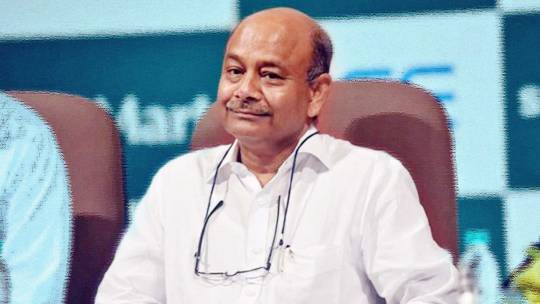
Long-term investment mindset
With his long-term investment horizon, unlike traders focusing on short-term gains, Damani has invested in various companies for numerous years.
The philosophy and approach of purchasing and holding onto stocks from fundamentally strong companies lets him earn benefits from steady growth, dividend payouts, and appreciation of long-term capital.
Avenue Supermarts, the parent company of DMart, highlights a great example demonstrating the exponential growth attained from long-term holdings.
Damani has also invested in Chennai Super Kings – an IPL franchise backed by India Cements Limited. With an illustrious history, they have participated in a record 10 finals, won a record five IPL titles in 2010, 2011, 2018, 2021, and 2023, and qualified for the playoffs 12 times out of the 14 seasons they have played in, which is more than any other franchise.
To have your hands-on gains that we can vouch for, buy csk unlisted shares from Altius Investech starting from just ₹ 153.
Value in Investments
Damani looks out for companies that are undervalued as per their actual worth. Buying the stocks at prices lower than their real, intrinsic value, makes him position himself for considerable gains once the market corrects the undervaluation. The method needs a deeper understanding of the fundamentals of business, involving debt levels, competitive advantages, and revenue streams.
No to High-debt companies
A significant factor in his investment strategies is an aversion to organizations with high debt levels. Instead, he seeks companies with stronger cash flows and manageable debt. The conservativeness shields his investments from risks linked with high leverage, especially during economic downturns, causing stable returns.
Market Timing
What needs to be acknowledged is the way Damani times his entry or exit from businesses, impeccably. He willingly buys stocks when the market shows pessimistic values and sells as per his interest. For example, his entry into some specific apparel or cement stocks during the time of market lows let him reap considerable gains with the recovery of these sectors.
Market Cycles
Damani’s interpretation and understanding of the market cycles significantly contribute to his success. Through effective studies levied on investor behavior and market patterns, he can anticipate market dynamic shifts. The capability of reading the market makes him adjust his strategies as per the prevailing economic scenario.
Business Fundamentals
The decisions he makes in his processes analyze business procedures to invest only in companies having strong management, sustainable advantages, and clear strategies for growth. Instead of market speculation, he identifies companies offering potential and stability, irrespective of conditions of market volatility.
Diversification
With important holdings in the investments and retail sectors, Damani’s portfolio remains diverse across different industries. Diversification helps in the mitigation of risks as poor performance of one stock or sector is compensated by the gains or stability of the rest. This counts as a classic strategy that served him well over the decades.
Network and Mentorship
A close-knit group consisting of seasoned investors as friends and mentors, including the famous Rakesh Jhunjhunwala, gives him a network providing him with robust exchanges of strategies and ideas, and refining his investment tactics and decisions.
Conclusion
Several disciplined approaches happen to focus on value investing, fundamental analyses, and cautious approaches for debt as well as market timing, making a huge figure to emulate in the world of investment.
Investors who intend to mirror his success must understand and implement these principles as a step forward in earning significant returns in the volatile world of trading stocks. To further diversify and grow your investment, consider investing in unlisted shares on Altius Investech, a platform known for its promising opportunities.
0 notes
Text
Top Stock Advisors in India You Need to Follow in 2024
Introduction
In the dynamic world of stock markets, having the right guidance can make a significant difference between success and failure. This is where stock advisors come into play. They provide invaluable insights, analysis, and recommendations that help investors navigate through the complexities of the market. In India, several stock advisors have gained prominence for their astute knowledge and successful track records. In this blog, we'll delve into the best stock advisor in India that you need to follow in 2024.
Importance of Stock Advisors
Stock advisors play a crucial role in the investment journey of individuals and institutions alike. They offer expert opinions, research reports, and personalized advice tailored to investors' financial goals and risk appetite. Their insights help investors make informed decisions, mitigate risks, and capitalize on opportunities in the stock market.
Criteria for Selecting the Best Stock Advisors
Before diving into the list of top stock advisors, it's essential to understand the criteria used for their selection. Factors such as market experience, track record, investment philosophy, risk management approach, and transparency are crucial in evaluating the credibility and reliability of stock advisors.
Top Stock Advisors in India in 2024
1. Rakesh Jhunjhunwala
Known as the "Big Bull" of Indian stock markets, Rakesh Jhunjhunwala is renowned for his shrewd investment acumen and long-term wealth creation strategies. With decades of experience, he has consistently identified multibagger stocks and is closely followed by investors for his market insights.
2. Porinju Veliyath
Porinju Veliyath is a seasoned investor known for his contrarian approach and value investing principles. He specializes in identifying undervalued stocks with significant growth potential. His investment picks and market commentaries are widely followed by retail and institutional investors.
3. Basant Maheshwari
Basant Maheshwari is a well-known name in the Indian stock market fraternity. He is revered for his disciplined investment approach, focusing on quality businesses with strong growth prospects. Maheshwari's investment philosophy revolves around identifying emerging trends and investing in companies with sustainable competitive advantages.
4. Vijay Kedia
Vijay Kedia is celebrated for his knack for spotting multibagger opportunities in the stock market. He emphasizes the importance of in-depth research, patience, and risk management in investing. Kedia's investment journey and stock picks serve as a source of inspiration for aspiring investors.
5. Raamdeo Agrawal
Raamdeo Agrawal is the co-founder of Motilal Oswal Financial Services and a veteran investor with decades of experience in the stock market. He is known for his deep understanding of market cycles, fundamental analysis, and long-term wealth creation strategies. Agrawal's investment insights are highly valued by investors seeking sustainable returns.
6. Dolly Khanna
Dolly Khanna, also known as Rajiv Khanna, is a prominent investor known for her expertise in small and mid-cap stocks. She has a proven track record of identifying multibagger opportunities in niche sectors. Khanna's investment portfolio and stock picks are closely monitored by market participants for potential investment ideas.
7. Sandip Sabharwal
Sandip Sabharwal is a renowned market commentator and investment advisor known for his insightful analysis and stock recommendations. He provides valuable perspectives on market trends, sectoral outlook, and investment strategies through his writings and media appearances.
Investment Strategies of Top Stock Advisors
Each of the top stock advisors mentioned above follows a distinct investment strategy based on their expertise, experience, and market outlook. While some focus on value investing, others may prefer growth-oriented or contrarian approaches. Understanding their investment philosophies can help investors align their strategies with their financial objectives.
Tips for Following Stock Advisors Wisely
Following stock advisors can be beneficial, but it's essential to approach their recommendations with caution and diligence. Here are some tips for following stock advisors wisely:
Conduct your research before acting on any recommendation.
Consider the suitability of the advice to your investment goals and risk tolerance.
Diversify your portfolio to mitigate risks associated with individual stock picks.
Monitor your investments regularly and stay updated on market developments.
Don't blindly follow stock tips; instead, understand the rationale behind the recommendations.
Conclusion
In the ever-changing landscape of the stock market, having access to reliable guidance and expert opinions is invaluable for investors. The top stock advisors in India mentioned in this blog have earned credibility and respect for their astute insights and successful investment strategies. By following their advice prudently and staying disciplined in your approach, you can enhance your chances of achieving long-term financial success in the stock market.
0 notes
Text
5 Investment secrets from Indian Stock Market king Rakesh Jhunjhunwala

Rakesh Jhunjhunwala is one of India's most successful and well-liked stock market investors. With about 20,000 crores in assets, he is one of India's wealthiest men. So, for every investor, here are 5 crucial lessons from Rakesh Jhunjhunwala's life:
Have a lot of patience- Rakesh Jhunjhunwala's patience with his stocks is one of his most impressive traits. Only two of his portfolio's stocks, for example, have yielded positive returns; the rest are in the red, but he doesn't seem to mind. He claims that he buys the company, not the stock and that he doesn't sell a single share as long as the company's fundamentals are sound. For example, his investment in Titan fell 30% from its peak; if one of our portfolio stocks fell 30%, would we panic and make rash decisions? Of course, but Jhunjhunwala has steel nerves; he didn't sell a single share of Titan because he believed in the Titan business and that patients paid off handsomely. Titan is now Jhunjhunwala's largest wealth producer, with something he might have missed if he had made an impetuous decision.
To Read This Full ARTICLE, Click Here
0 notes
Text
14 Must-Watch Stock Market Documentaries: Your Complete Guide
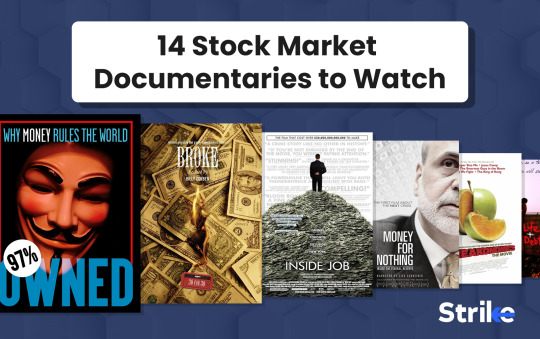
The stock market is a realm where dreams are built and fortunes are lost. Understanding its intricacies can feel overwhelming. But what if you could learn through compelling stories, gripping scandals, and inspiring success stories? That’s where stock market documentaries come in.
These films offer a window into the highs, lows, and behind-the-scenes realities of the financial world. Whether you're a beginner or a seasoned investor, they provide invaluable insights into market dynamics, investor psychology, and the economic forces at play.
Why Stock Market Documentaries Are a Must-Watch
Stock market documentaries go beyond dry textbooks and bring real-world examples to life. Whether you're learning about the rise and fall of companies like Satyam Computers in India or diving into the 2008 global financial crisis, these films reveal the power of knowledge in navigating markets.
Key Statistics to Consider
According to a study by the NSE, only 2.5% of Indians actively invest in the stock market, compared to 55% of Americans.
Research from SEBI (Securities and Exchange Board of India) highlights financial illiteracy as a significant barrier to retail participation.
Why This Matters
Understanding the market is critical. Tools like Strike.money are helping bridge this gap, offering intuitive platforms to track and trade in the Indian stock market.

How Documentaries Illuminate Financial Systems
Documentaries unpack complex systems into engaging stories. They cover market crashes, financial bubbles, and trading psychology, offering a fresh perspective for viewers.
Case Study: The Harshad Mehta Scam
India’s infamous Harshad Mehta scandal of 1992, as portrayed in Scam 1992: The Harshad Mehta Story, highlights loopholes in the banking system. While not a documentary, this series parallels global classics like The Big Short in explaining intricate financial fraud.
Top Documentaries About Market Crashes and Bubbles
These films showcase the fragility of financial systems and the repercussions of greed and speculation.
1. Inside Job (2010)

Focus: The 2008 global financial crisis. What You'll Learn:
How unchecked risk-taking led to economic disaster.
The role of credit default swaps and subprime mortgages.
Relevance to India: The Indian market also felt the ripples of the 2008 crash, with the Sensex dropping over 50% from its peak. This film offers a global context to local impacts.
2. The Big Short (2015)

Focus: The collapse of the US housing market. What You'll Learn:
Innovative financial instruments and their dangers.
The psychology of contrarian investing.
Indian Perspective: Think about the NBFC crisis of 2018, which exposed the risks of lending practices closer to home.
Stories of Wall Street Scandals and Corporate Fraud
These documentaries explore greed and corruption, holding a mirror to unethical practices in finance.
3. Enron: The Smartest Guys in the Room (2005)
Focus: Corporate fraud at Enron. What You'll Learn:
How accounting tricks hid debt and inflated profits.
The catastrophic effects of unethical leadership.
Indian Example: The Satyam scandal mirrors Enron's story. In 2009, the company admitted to inflating profits for years, causing investor panic.
4. Chasing Madoff (2010)
Focus: Bernie Madoff’s $65 billion Ponzi scheme. What You'll Learn:
The importance of regulatory oversight.
How whistleblowers play a critical role.
Did You Know? In India, SEBI’s regulations aim to prevent Ponzi schemes, yet scams like the Saradha chit fund have shown systemic vulnerabilities.
Documentaries Focused on Trading Strategies and Success Stories
These films inspire investors by showcasing innovative strategies and disciplined approaches.
5. Becoming Warren Buffett (2017)
Focus: The life of Warren Buffett. What You'll Learn:
The value of patience and research in investing.
How simplicity and focus lead to long-term success.
Indian Example: Ace investor Rakesh Jhunjhunwala, often referred to as India’s Warren Buffett, followed similar principles to build his wealth.
6. Trader (1987)
Focus: Paul Tudor Jones, a legendary hedge fund manager. What You'll Learn:
Risk management in volatile markets.
The emotional side of trading.
Modern Tools: Platforms like Strike.money can help Indian traders analyze trends and manage risk effectively.
Key Lessons from Stock Market Documentaries
Watching these documentaries is more than entertainment; it’s an education. Here are the recurring lessons:
1. Understand Market Psychology
Films like The Big Short reveal how greed and fear drive markets. Similarly, the 2020 retail frenzy in India’s stock market showcased the power of herd mentality.
2. Diversification Is Key
Documentaries often highlight the dangers of over-leveraging. For instance, during the IL&FS crisis, over-dependence on debt-financed growth led to a systemic collapse.
3. Regulation Matters
From Bernie Madoff to Harshad Mehta, lack of regulatory oversight has been a common theme in financial fraud.
4. Leverage Technology
Tools like Strike.money allow traders to monitor their portfolios, set alerts, and track trends, making informed decisions easier.
Where to Watch These Documentaries
Here’s where you can find these must-watch films:
Streaming Platforms
Netflix: Inside Job, Becoming Warren Buffett.
Amazon Prime: The Big Short.
YouTube: Trader, Chasing Madoff (often available as rentals).
Indian Platforms
SonyLIV: Scam 1992: The Harshad Mehta Story.
Hotstar: Financial news and educational content.
Why These Documentaries Are Essential for Every Investor
Whether you’re a new investor or a seasoned trader, these documentaries provide a wealth of knowledge:
Real-world context: Learn from past mistakes and successes.
Actionable insights: Improve your strategies with lessons from the best.
Global perspective: Understand how international events affect local markets.
With tools like Strike.money, you can put these lessons into practice, empowering yourself to navigate the stock market confidently.
Conclusion
The stock market is a dynamic space, and understanding its nuances is key to long-term success. By watching these documentaries, you gain insights into market behavior, the psychology of investing, and the systemic challenges of the financial world.
Start your journey today with these films—and don’t forget to leverage trading tools like Strike.money to take your investments to the next level.
0 notes
Text
Ashish Kacholia is a talented investor. He co-founded Hungama Digital with Rakesh Jhunjhunwala. Later, he established his own company, Lucky Securities, in 2003. He prefers to invest in small and medium-sized businesses. Reveal the journey of Ashish Kacholia, the astute investor who conquered the stock market. Learn his secrets today!
#Ashish Kacholia Portfolio#Ashish Kacholia net worth#ashish kacholia's shareholdings#Investor Ashish Kacholia#Latest buy Ashish Kacholia
0 notes
Text
At Rs 12,253 crore, Rakesh Jhunjhunwala Portfolio's Top Holding Is In THIS Company
The next most-valued holding is in Star Health to the tune of Rs 6,050 crore, followed by Metro Brands at Rs 3,326 crore and Tata Motors at Rs 2,475 crore. source https://zeenews.india.com/markets/rakesh-jhunjhunwala-portfolios-top-holding-is-in-titan-holding-value-to-the-tune-of-rs-12253-crore-2599726.html
View On WordPress
0 notes
Text
Know India’s Top Investors In Share Market
Rakesh Jhunjhunwala, also known as The Big Bull, was regarded as India’s very own Warren Buffet. Before investing, Radhakishan Damani believes the company’s ethical principles should be thoroughly examined. We frequently follow eminent Indian stock market investors who have achieved phenomenal success and attempt to engage in the same kinds of ventures that they have. Incredible investing…

View On WordPress
0 notes
Text
SVB Breakdown Two Subsidiaries Of Nazara Tech Have Invested Rs 64-cr Cash Balance In Collapsed Lender Rakesh Jhunjhunwala In This First Gaming Technology Company
American giant Silicon Valley Bank (SVB)’s sinking is a blow to the startup industry around the world. The shock can also be seen in Indian companies and one of them is Tech (Nazara Tech) is also. The money of two subsidiaries of Najara, the country’s first publicly traded gaming technology company, is tied up in it. The company informed on March 12 that its two retiring subsidiaries Kiddopia Inc…

View On WordPress
0 notes
Text
Top 10 Richest People In India 2023
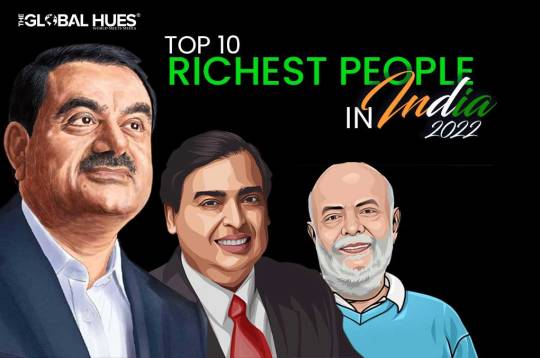
India’s top 2 billionaires position them successfully in the list of the Top 10 richest billionaires in the world. And it’s been more than a year, hence indicating that the country has a record high number of billionaires and industrialists.
Mukesh Ambani and Gautam Adani have become the top industrialists while Cyrus Poonawalla’s Serum Institute of India became the country’s biggest producer of Covid-19 vaccines and earned huge revenue.
It is also important to know the contribution of Savitri Jindal, the only woman on the list of the top 10 richest people in India.
Let’s quickly take a look at the top 10 richest people in India in 2023:
youtube
10. UDAY KOTAK
Net Worth: $13.6 Billion (as of January 2023)
Age: 63 Years
Source of Wealth: Kotak Mahindra Bank
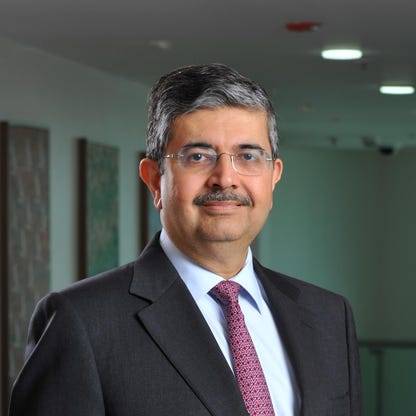
The Indian billionaire, the Founder and Managing Director of Kotak Mahindra Group, Uday Kotak is a renowned personality and is idealised by many around the nation. He was born in 1959 in an upper-middle-class Gujarati Lohana joint family in Mumbai.
Although he built his career as a cricketer, an immediate surgery marked the end of his cricket dreams. Recollecting the hope, he began his entrepreneurial journey by establishing his finance and bill discounting business with a seed capital borrowed from his friends and near & dear ones. As the major part of the investment that he borrowed came from Anand Mahindra, he named his agency ‘Kotak Mahindra’.
9. KUMAR BIRLA
Net Worth: $15.5 Billion (as of January 2023)
Age: 55 Years
Source of Wealth: Hindalco Industries
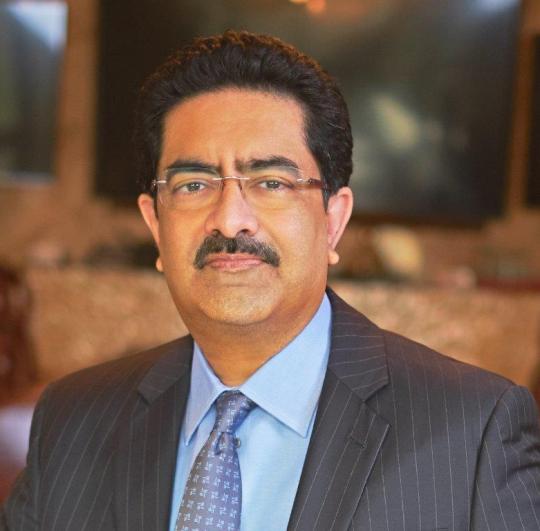
Another richest billionaire on the list is Kumar Birla, the Chairman of the third largest Indian business conglomerate, Aditya Birla Group. He is also the Chairman of the Indian Institute of Management Ahmedabad and the Chancellor of the Birla Institute of Technology & Science.
He took over the Aditya Birla Group at the age of 28 due to the sudden demise of his father. He faced a lot of scepticism because of his lack of experience but with his sharp business sense, he took the company to the heights.
8. RADHAKISHAN DAMANI
Net Worth: $16.1 Billion (as of January 2023)
Age: 68 Years
Source of Wealth: Avenue Supermarts Limited
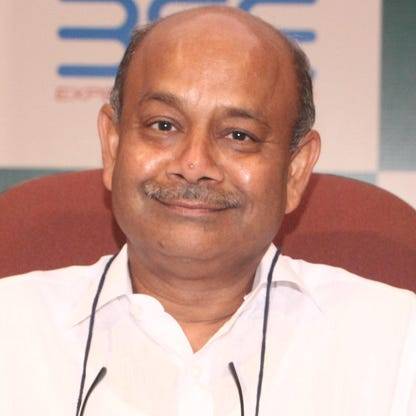
A renowned Mumbai-based investor and entrepreneur, Radhakishan Damani is the owner of India’s third-largest mega-retail stores’ chain, ‘DMart.’ Rakesh Jhunjhunwala considers him as his mentor in the Indian share market.
He was born in 1954 to an Indian Marwari family, born and brought up in Bikaner, Rajasthan. He started his career as a stockbroker but soon started stock trading in the Indian stock market. He gained a foothold in the business community only after he overpowered the Indian stockbroker Harshad Mehta.
7. DILIP SHANGHVI
Net Worth: $16.6 Billion (as of January 2023)
Age: 67 Years
Source of Wealth: Sun Pharmaceuticals
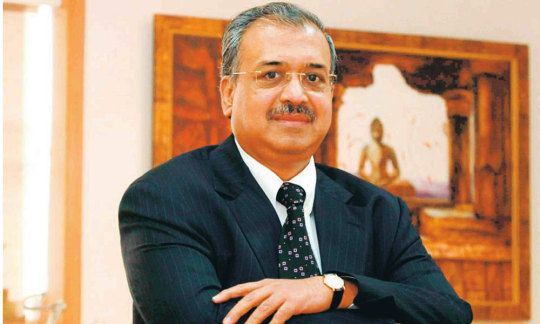
Dilip Shantilal Shanghvi is a popular Indian billionaire who is also the Founder of Sun Pharmaceuticals. After Dilip made the company public in 1994, three years later Sun Pharma made its first international acquisition when it bought Detroit-based Caraco Pharmaceutical Laboratories. Among many other acquisitions, the notable one was the purchase of Ranbaxy Laboratories in 2014.
Sun Pharma experienced multifaceted growth under the leadership of sharp-witted Dilip Shanghvi. In 2018, he became a member of the Reserve Bank of India’s central board.
6. LAKSHMI MITTAL
Net Worth: $17.9 Billion (as of January 2023)
Age: 72 Years
Source of Wealth: ArcelorMittal
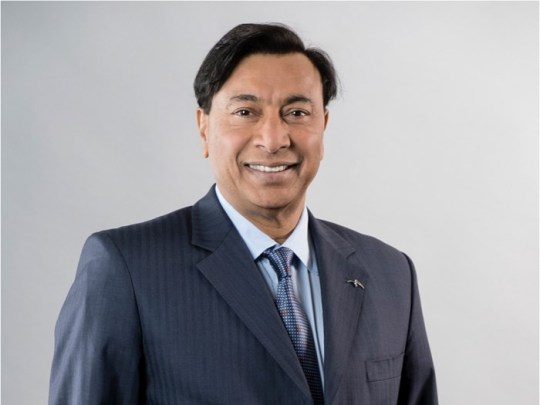
Successfully securing his position among the top 10 richest persons in India, Lakshmi Narayan Mittal is an Indian billionaire who is the Executive Chairman of the world’s leading steel and mining company ArcelorMittal. He served as the CEO of the company till February 2021.
He was born in Sadulpur in Rajasthan in 1950. He began his career in his family’s steelmaking business in India before he moved to Indonesia in 1976 to set up a small steel company that over time grew to become today’s widely popular ArcelorMittal. He was awarded the Padma Vibhushan, India’s second highest civilian honour, by the President of India in 2008.
5. SAVITRI JINDAL AND FAMILY
Net Worth: $18.1 Billion (as of January 2023)
Age: 72 Years
Source of Wealth: O.P. Jindal Group

Savitri Jindal is a wonderful example of being the only richest woman in a self-proclaimed man’s world. She is the Chairperson Emeritus of Jindal Steel & Power Limited. She is also the President of Maharaja Agrasen Medical College (MAMC), Agroha established in 1998.
After the sudden death of her husband, Om Prakash Jindal in 2005, India’s richest woman Savitri Jindal took over her husband’s steel and power conglomerate. Committed to following the values of OP Jindal, she is running the business with full vigour.
4. CYRUS POONAWALLA
Net Worth: $21 Billion (as of January 2023)
Age: 81 Years
Source of Wealth: Serum Institute of India
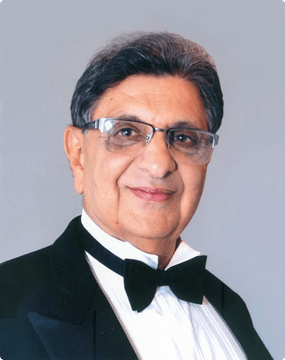
Cyrus Poonawalla is the Founder and Managing Director of Cyrus Poonawalla Group, which includes the Serum Institute of India (SII), an Indian biotechnology company manufacturing highly specialised life-saving biologicals.
In 1966, Cyrus incepted the Serum Institute of India to derive therapeutic serum from horse blood. Within two years, the institute launched its first therapeutic tetanus serum and started producing anti-tetanus vaccines. Although he faced a couple of challenges with financing and recognition of the company, Cyrus also stood to fight against all of them.
3. SHIV NADAR
Net Worth: $25.6 Billion (as of January 2023)
Age: 77 Years
Source of Wealth: HCL Enterprise
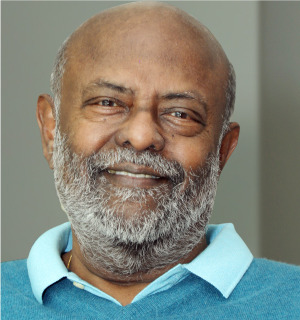
Another prominent name in the list of top 10 richest billionaires in India is famous billionaire industrialist and philanthropist, Shiv Nadar who is also the Founder of Hindustan Computers Limited (HCL).
Shiv Nadar was born on 14th July 1945, to his father, Sivasubramaniya and mother, Vamasundari Devi in Tiruchendur, Tamil Nadu India. He started his career in 1967 as an engineer at Walchand Group’s Cooper Engineering (COEP) in Pune. After a few years, he quit his job to take up a business-oriented career in partnership with Ajai Chowdhry and other colleagues to establish an enterprise which came to be known as Microcomp under the brand name ‘Televista’. Later, all of them together founded HCL Tech in 1976 to manufacture microprocessors and calculators.
2. MUKESH AMBANI
Net Worth: $88.3 Billion (as of January 2023)
Age: 65 Years
Source of Wealth: Reliance Industries Ltd
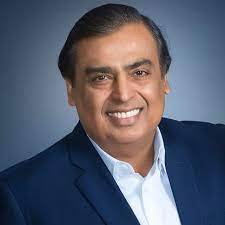
Mukesh Ambani is a widely recognized Indian billionaire industrialist who is the Chairman and Managing Director of Reliance Industries Ltd. (RIL), an MNC with diverse businesses including energy, natural gas, mass media, retail, petrochemicals, telecommunications, and textiles.
After the death of his father Dhirubhai Ambani, the brothers Mukesh Ambani and Anil Ambani assumed joint leadership of the Reliance companies but due to feuds between the brothers, Kokilaben Ambani, their mother, split the assets under which Mukesh assumed control of the gas, oil, and petrochemicals units. He grew the business multifariously and became one of the richest persons in India.
1. GAUTAM ADANI
Net Worth: $125.6 Billion (as of January 2023)
Age: 60 Years
Source of Wealth: Adani Group
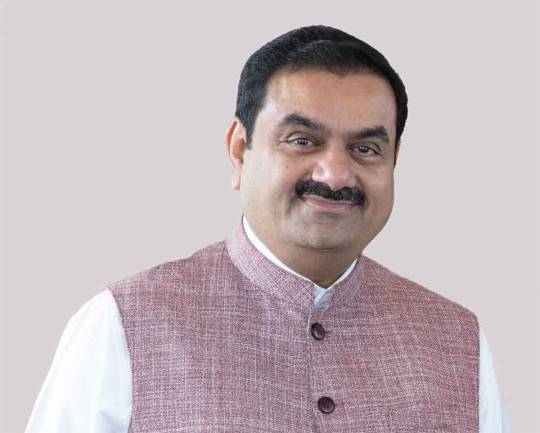
The first name on the list of richest Indians is none other than Gautam Adani. Born on 24 June 1962, Gautam Adani is the Founder and Chairman of Adani Group. The self-made billionaire operates a world-class integrated infrastructure company that includes coal trading, coal mining, ports, oil and gas exploration, multimodal transportation, transmission, power production, and gas distribution.
In May 2022, Gautami Adani’s firm picked up two well-known companies—Ambuja Cement and ACC—that Holcim owned. He is not only India’s richest person but is also the wealthiest person in the world.
Frequently Asked Questions:
Q. Who is the richest man in Asia? Gautam Adani
Q. Why Ratan Tata is not in the list of richest people in India? Ratan Tata is involved in a lot of philanthropy work through Tata Trusts. He is at the 433 position on the IIFL Wealth Hurun India Rich List 2021. 66% of the profits earned by Tata Companies is donated for philanthropic activities.
Q. Who will become the first trillionaire on Earth? Founder of SpaceX and Tesla, Elon Musk will become the first trillionaire in the future.
Must Read:
TOP 10 RICHEST BILLIONAIRES IN THE WORLD 2023
Top 10 Indian Origin CEOs Leading International Companies
TOP 10 IN-DEMAND SKILLS FOR 2023
SUCCESS STORY OF TIM COOK: A MAN WITH A VISION
HIGHEST-PAID CEOs IN THE WORLD
Success Story Of Mukesh Ambani
TOP 10 NEWSPAPERS IN THE WORLD 2023
Elon Musk: Biography Of A Self-Made Entrepreneur And Billionaire
10 GADGETS TO KEEP YOU COOL THIS SUMMER
7 R’s Of Waste Management – Steps To Sustainability
What Are The 5 Must Watch Netflix Thrillers
0 notes
Text
Why This Diwali Is The Best Time For You To Invest

Options for investing during Diwali: There are numerous investment options available, ranging from corporate bonds and gold to equities and index funds, all of which can help you grow wealth and be financially stable in the long run.
Lights are used to celebrate Diwali, and Goddess Lakshmi represents wealth. It is prudent to set financial strategies and lay the groundwork for financial security throughout the Samvat year (the Hindu New Year). People can accumulate wealth and plan for their financial future in a variety of ways, like purchasing gold or stocks.
The primary market
Initial public offerings (IPOs) are excellent long-term investments. Following a brief period of quiet, the market for initial public offerings (IPOs) has recently erupted. As the economy and business growth continue, many companies will turn to the major markets to raise capital and list their subsidiaries or verticals.
Equity
Long-term gains on equities have always outperformed short-term swings in the economy and market. In the long run, they may outperform other asset classes. Value investing is a fantastic place to start. Value investors are similar to stock scouts in that they seek out cheap companies or stocks that other market participants have yet to discover. They invest in businesses rather than stocks. Rakesh Jhunjhunwala and Warren Buffet are two instances of value investors.
Investing in firms with high dividend yields may also be a good choice, especially when the market is volatile. Some Indian companies are noted for paying out lucrative dividends. Because they are still stocks, high-dividend companies have the potential to rise in value.
Index funds are a terrific place to start investing now. Index funds are believed to provide superior long-term returns around Diwali.
Because the market can fluctuate and there is a genuine risk of losing money, you may not want to invest in stocks if you are unfamiliar with the market. Index funds are shown below. An index fund is a form of mutual fund that resembles an index's portfolio. A Nifty index fund, for example, would track the NSE Nifty index and hold a mix of the Nifty's 50 constituent firms. An index fund's performance would be similar to that of the index it tracks. As a result, asset allocation with index funds provides diversity, reduces risks, and improves long-term returns.
Corporate bonds
Corporate bonds are a good choice for investors who don't want to take too much risk and want a stable way to make money and good returns in a time when fixed deposit rates are going down. These bonds are made by both private and public businesses. Investors should only choose companies with a good reputation, a long history of paying their bills, and a high credit score.
Gold
This year, gold has been one of the finest investments. It has increased by more than 30%. Gold is seen as a secure investment option since it performs well in times of uncertainty. Gold is likely to retain its luster for a long time, as the Covid19 pandemic shows no signs of abating and geopolitical issues in India's neighborhood and around the world worsen. Gold is also an excellent way to hedge against inflation. Buying gold during the Dhanteras festival is thought to be lucky.
If you'd like to open a Zebu trading account and begin investing in any of these instruments, please contact us right now.
#online trading company#online trading platform#lowest brokerage#stock market#stock market basics#basics of share market#stock market beginner#stock split#stock trading
0 notes
Text
राकेश झुनझुनवाला को टाइटन के शेयरों ने 1 दिन में कराई 600 करोड़ से ज्यादा की कमाई
राकेश झुनझुनवाला को टाइटन के शेयरों ने 1 दिन में कराई 600 करोड़ से ज्यादा की कमाई
टाटा ग्रुप के एक शेयर ने दिग्गज इनवेस्टर राकेश झुनझुनवाला को तगड़ी कमाई कराई है। यह स्टॉक टाइटन (Titan Company) का है। टाइटन के शेयरों में गुरुवार को आए तेज उछ��ल से राकेश झुनझुनवाला को 600 करोड़ रुपये से ज्यादा की कमाई (इंट्राडे गेन) हुई है। टाइटन के शेयर 7 जुलाई 2022 को नेशनल स्टॉक एक्सचेंज (NSE) में दिन के कारोबार के दौरान 7 फीसदी की तेजी के साथ 2,171.60 रुपये के स्तर पर पहुंच गए। कारोबार के…
View On WordPress
#Business News#Business News In Hindi#Hindi News#Hindustan#News in Hindi#Rakesh JhunJhunwala#Rakesh Jhunjhunwala Business#Rakesh Jhunjhunwala Company#Rakesh Jhunjhunwala Favorite stock#Rakesh Jhunjhunwala Networth#Rakesh Jhunjhunwala portfolio#Rakesh Jhunjhunwala Share#Rakesh Jhunjhunwala Stock list#Rakesh Jhunjhunwala Stocks#Tata Group Stock Titan#Titan#Titan Business#titan share price#Titan Stock#Titan Stock Price#टाइटन#टाइटन कंपनी#टाइटन शेयर प्राइस#टाइटन स्टॉक परफॉर्मेंस#टाइटन स्टॉक प्राइस#राकेश झुनझुनवाला#राकेश झुनझुनवाला कंपनी#राकेश झुनझुनवाला पोर्टफोलियो#राकेश झुनझुनवाला बिजनेस#राकेश झुनझुनवाला शेयर
0 notes